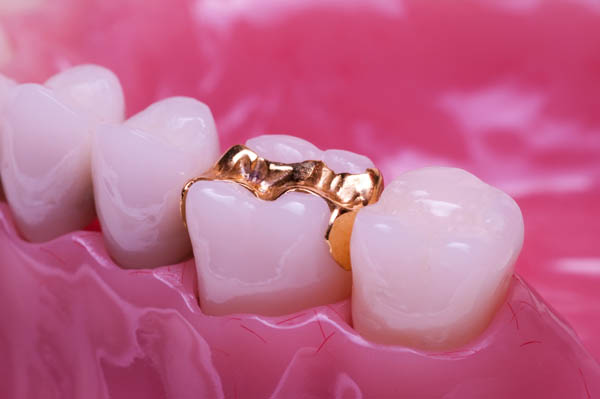Tooth Filling vs. Dental Inlay

Looking to understand the difference between a dental inlay and a regular filling? Dental inlays are one of many restoration options that general dentists offer patients who are suffering from a damaged tooth. Another common option is a dental filling, which has varying characteristics but offers a similar outcome.
Long ago, there were very limited options when it came to restoring teeth. However, modern technology has allowed for the improvement and development of many restoration options, thus making it hard to know which is best for your individual situation. Thankfully, general dentists can be of help. Keep reading to find out more about dental inlays and fillings.
Understanding how a dental inlay compares to dental fillings
Below is a quick overview of dental inlays and fillings, both of which are used to restore teeth that are in poor shape. This information can be helpful to review when considering different options.
Dental inlays
Dental inlays are similar to fillings, however, they are considered an indirect restoration and they can address bigger cavities in the teeth. Unlike fillings, a dental inlay is crafted outside of the tooth and custom-done. This means that a dental lab makes the inlay and then the general dentist applies it using bonding.
Material options for dental inlays include gold, porcelain, or composite resin. Composite resin is typically used for more temporary fixes, while gold and porcelain are much more durable.
Dental fillings
A dental filling is a procedure done to literally fill a tooth that has a cavity in it. The filling material itself is made of gold, porcelain, plastic, composite resin, silver amalgam, or dental glass. Gold and silver amalgam are strong materials, but they do draw attention to the mouth as they are metal-colored. Porcelain is the most common choice as it is discreet due to its white color, but also very strong.
Dental fillings are recommended when a tooth has a minor to moderate cavity. Additionally, they can be used to restore teeth that have been chipped or cracked, so long as the size is small.
Which option is best?
When trying to decide whether to choose a dental inlay or filling, it is best to consider a few things. Ultimately, the general dentist will make the final call, however, the following aspects are taken into consideration:
- The size of the cavity or damaged area
- The location of the tooth. Molars may require a dental inlay since it is a better solution for bigger problems
- Whether the tooth is a primary or secondary tooth. Baby teeth will fall out eventually, which means they may not need a permanent solution
Find out more from a general dentist
When trying to decide between dental inlays and fillings, it is best to consult directly with a general dentist. Questions and concerns about both procedures can be addressed and an evaluation can be performed in order to determine which option is best. Reach out today to learn more about dental inlays or to get scheduled for an appointment.
Request an appointment here: https://clearcreekdentistry.net or call Clear Creek Dentistry at (360) 692-6332 for an appointment in our Silverdale office.
Check out what others are saying about our services on Yelp: Read our Yelp reviews.
Recent Posts
General dentistry happens to include restoring teeth that are in bad shape or completely missing. Of course, a restoration is meant to bring the tooth back to its original shape, form, and function. However, in some cases, this is not all the way possible, making it necessary to undergo something like a dental bridge placement.…
Dental implants are a great way to replace multiple missing teeth. A dental bridge is also a solution for multiple teeth replacement in many cases as well. By learning more about the pros and cons of each option, it will help you decide which treatment option is right for you. Missing teeth create a cosmetic, functional…
A smile makeover can restore confidence in your smile. Those who are not completely satisfied with their smiles can take advantage of the many options available, one such option including teeth straightening. Dental professionals can offer these options thanks to innovations in dental technology. Now, it is easier than ever for you to make your…
Getting a dental crown is a significant first step in improving your smile. However, you might wonder why you need the device. Repairing the spot soon will help to keep your teeth in good health. Plus, a crown can make your smile look better. Keep reading to learn more about the benefits.The patient often has…


